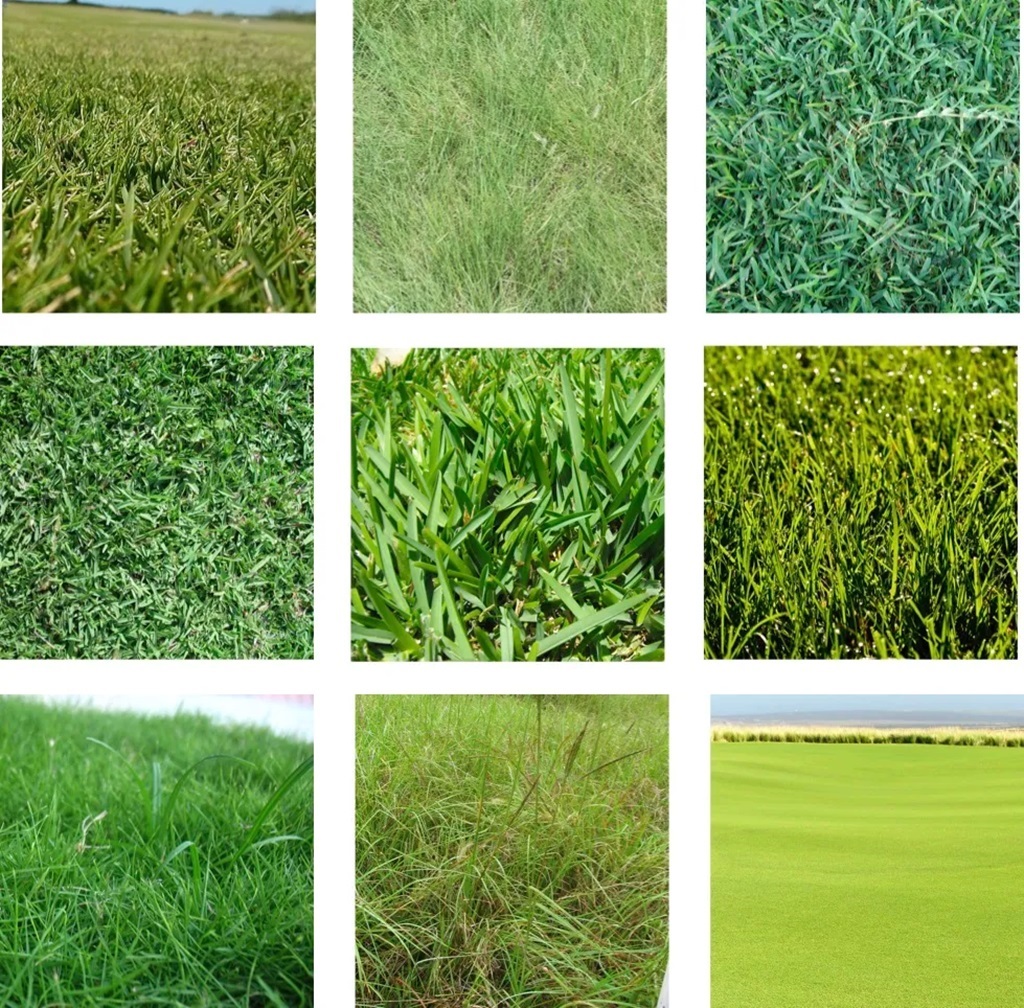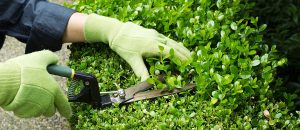
As a Florida resident, you’re probably very familiar with grass. It carpets yards and parks with its green hue. But did you know there are several different grass species commonly grown in Florida? When it comes to having a lush, durable lawn, it’s important to know exactly what type of grass you have and how to care for it properly. This guide will go over the features and needs of the most popular grass varieties for Florida lawns. Read on to become a Florida grass identification expert!
Bahia Florida Grass
Bahia grass (Paspalum notatum) is a warm-season perennial grass that is the most commonly used lawn grass in Florida. Here are some tips for identifying bahia grass:
Features
- Coarse-textured grass with short seed heads sprouting up from shoot nodes
- Aggressive, lateral spread by above-ground stolons and rhizomes
- Leaf blades are flat, blunt, and grey-green or blue-green in color
- Grows in thick tufts or motts with open areas between patches
Growth Pattern
- Grows actively during summer rainy season
- Dormant in winter with straw-brown color
- Tolerates heat, humidity, drought, salt, and low soil fertility
Care
- Requires full sun and infrequent watering once established
- Mow at 3-4 inch height
- Moderate fertilization needs

St. Augustine Grass
St. Augustine grass (Stenotaphrum secundatum) is a warm-season grass that is known for its thick, lush appearance. Here are tips on recognizing this grass:
Features
- Broad, flat blades with boat-shaped tips, usually 8-10 inches long
- Blue-green color that turns tan once dormant
- Forms a dense, spongy turf iPad mini
- Has above-ground stolons that form thick mats
Growth Pattern
- Aggressively growing during warm months
- Goes dormant and loses color in winter
Care
- Prefers full sun but tolerates some shade
- Requires more water and fertilizer than other Florida grasses
Centipede Grass
Centipede grass (Eremochloa ophiuroides) is a low-maintenance grass suitable for many Florida lawns. Here’s how to identify it:
Features
- Sparse growth habit with spaced out blades
- Yellow-green color
- Alternating broad and narrow leaf blades shaped like centipede legs
- Low growth under 12 inches tall
Growth Pattern
- Grows actively during warm months
- Browning and dormancy in winter
Care
- Thrives in infertile, acidic soil
- Tolerates drought and requires little fertilization
- Grows well in partial sun/shade
- Seeding not recommended due to slow growth
Zoysia Grass
Zoysia grass (Zoysia spp.) is popular for its fine textures blades and tolerance of heat, drought and foot traffic. Identifying features include:
Features
- Extremely dense growth with stiff, coarse leaves
- Bluish-gray-green color
- Leaf tips taper to a sharp point
- Growth under 12 inches tall
- Spreads slowly via rhizomes and stolons
Growth Pattern
- Actively growing in summer
- Goes straw-brown and dormant once temperatures cool
Care
- Prefers full sun
- Heat and drought tolerant once established
- Can survive in poor, sandy soil
- Few disease or pest problems
When & How to Plant Grass in Florida
The warm Florida climate means grass can be planted nearly year-round, but the early summer rainy season is ideal for establishing new lawns. Here is a quick guide on timing and methods for planting the main grass varieties:
Bahia Grass
When to Plant: Early summer (June-July)
How to Plant:
- Option 1 – Sod – Offers instant lawn at higher cost
- Option 2 – Sprigs – Small grass pieces tilled into soil
- Option 3 – Seeds – Slow to establish but cheaper
St. Augustine Grass
When to Plant: Spring or summer
How to Plant:
- Option 1 – Sod – Quick coverage but more expensive
- Option 2 – Plugs – Small sections planted throughout area
Notes: St. Augustine does not grow well from seed or sprigs
Centipede Grass
When to Plant: Spring and early summer
How to Plant:
- Seeding – Seed new lawns at rate of 4-6 lbs per 1,000 sq ft
Notes: Sod and plugs are not available commercially for centipede
Zoysia Grass
When to Plant: Early summer
How to Plant:
- Sod – For fastest establishment
- Plugs – Can be planted throughout area
- Seeding possible but slow to grow
Maintaining a Healthy Florida Lawn
Proper mowing, watering, fertilization and other care measures are key to keeping Florida grass healthy year round. Here are top tips for upkeep once your lawn is established:
Mowing
- Height: Mow to 3-4 inches to encourage deep roots. Never cut more than 1/3 of blade height.
- Frequency: Mow every 5-10 days during active growth. Adjust for slower growth in winter.
- Blades: Keep mower blades sharp to reduce stress and disease.
Watering
- New Sod/Seed: Water daily for first 2-3 weeks.
- Established Lawns: Water early morning 1-2 times a week. Test soil moisture before watering.
Fertilization
- When: Apply fertilizer in early spring, early summer, and fall.
- What to Use: A complete (N-P-K) fertilizer with micro-nutrients. Slow-release is best.
- How Much: Follow product guidelines based on grass type and sq footage of lawn space.
Aeration
- When Needed: When soil is compacted. Spring/fall best.
- How: Use core aeration machine to punch holes in soil so air/water/nutrients can enter.
Common Florida Lawn Weeds
Along with properly caring for your grass type, it’s equally important to identify and remove weeds invading your lawn. Here are the most notoriously common weeds in Florida lawns and how to spot them:
Crabgrass
Crabgrass is arguably the most problematic weed across Florida lawns. Identify it by:
- Unique crab-like shape with slender branching stems radiating from base
- Lime green color
- Coarse and stiff leaf texture
- Low-growing around 6 inches in height
- Aggressive spread via heavy seed production
Florida Betony
This weed features:
- Abundant burgundy-colored flowers rising above foliage
- Oval leaves occurring in pairs along square stems
- Height around 6-18 inches
- Moderate growth rate and seed production
Torpedograss
Features giving away this stubborn grassy weed include:
- Very coarse, dark green leaf blades with sharply-serrated edges
- Grows in circular-shaped patches up to 12 inches high
- Spreads rampantly through rhizomes underground
- Tolerates mowing and resists most chemical control
Chamberbitter
You can spot this low-growing broadleaf weed by:
- Distinctive yellow 5-petaled, daisy-like flowers
- Abundant tiny fruits housing many seeds
- Leaves varying from toothed to deeply-lobed
- Often found invading flowerbeds and vegetables gardens
Goosegrass
What distinguishes this summer annual grassy weed:
- White, finger-like protrusions giving stem a feather look
- Fast germination and growth after rains
- Aggressive seed head production
- Dies out with winter frosts

Controlling Weeds in Your Florida Lawn
The key to eliminating lawn weeds is identifying them promptly and attacking them repeatedly using proper control methods. Here are top tips for targeting common Florida lawn weeds:
Crabgrass
Prevent: Use pre-emergent herbicide in early spring
Remove: Spot treat young plants with post-emergent crabgrass killer containing quinclorac. Dig out larger plants. Overseed treated areas.
Florida Betony
Remove: Apply selective broadleaf herbicides containing 2,4-D, dicamba or MCPP. Combination products often most effective.
Torpedograss
Remove: Repeated glyphosate applications to actively growing foliage. Complete control difficult. Digging out small patches can be effective.
Chamberbitter
Remove: 2,4-D and dicamba formulas work well. Combinations with mecoprop provide fuller spectrum control. Also hand pull small infestations.
Goosegrass
Prevent: Pre-emergent herbicide prior to summer rainy season
Remove: Post-emergent spraying with MSMA or DSMA once plants visible.
Conclusion & Summary
I hope this beginner’s guide has helped teach you how to identify Florida’s most popular grass types and properly care for your lawn. To recap, bahia grass, St. Augustine, centipede grass, and zoysia grass are commonly grown in Florida lawns. Pay attention to their distinct features like leaf shape and growth habits. Time warm season Florida grass planting for early summer months using sod, sprigs, plugs or seed depending on variety. Maintain healthy grass with proper mowing, watering, fertilizing, and aerating. Watch for invading crabgrass, Florida betony, torpedograss, chamberbitter and goosegrass weeds. In Florida, where a lush and thick lawn is the pride of homeowners, understanding the common grass types is essential. Control weeds effectively by diligently identifying and employing selective pre and post-emergent herbicide applications, ensuring your commitment to recognizing grass types and their unique characteristics results in a flourishing lawn that you can truly take pride in.
Frequently Asked Questions
What are the most common grass types used in Florida lawns?
The four main grass varieties used in Florida lawns are bahia grass, St. Augustine grass, centipede grass and zoysia grass. Each has unique features, growth patterns and care needs.
What’s the easiest method for establishing a new Florida lawn?
For fastest establishment with less maintenance, installing new sod is the easiest grass planting method. The other option that offers immediate results is laying plugs or sprigs from desired grass varieties.
When is the best time to seed a Florida lawn?
The warm rainy period from early summer to early fall provides ideal conditions for germinating and growing grass from seed. This window offers new grass the moisture, humidity and time needed to mature before cooler months arrive.
What are some tips for maintaining a healthy Florida lawn?
Mowing to proper heights for your grass type, watering early morning just 1-2 times weekly, fertilizing lightly three times annually, and aerating compacted soil are key to nurturing a vigorous Florida lawn.
How can I control crabgrass invading my St. Augustine lawn?
The most effective crabgrass strategy is applying pre-emergent herbicide in early spring before seeds sprout. For existing plants, use spot treatments of quinclorac-containing post-emergent killer. Overseed treated areas.




